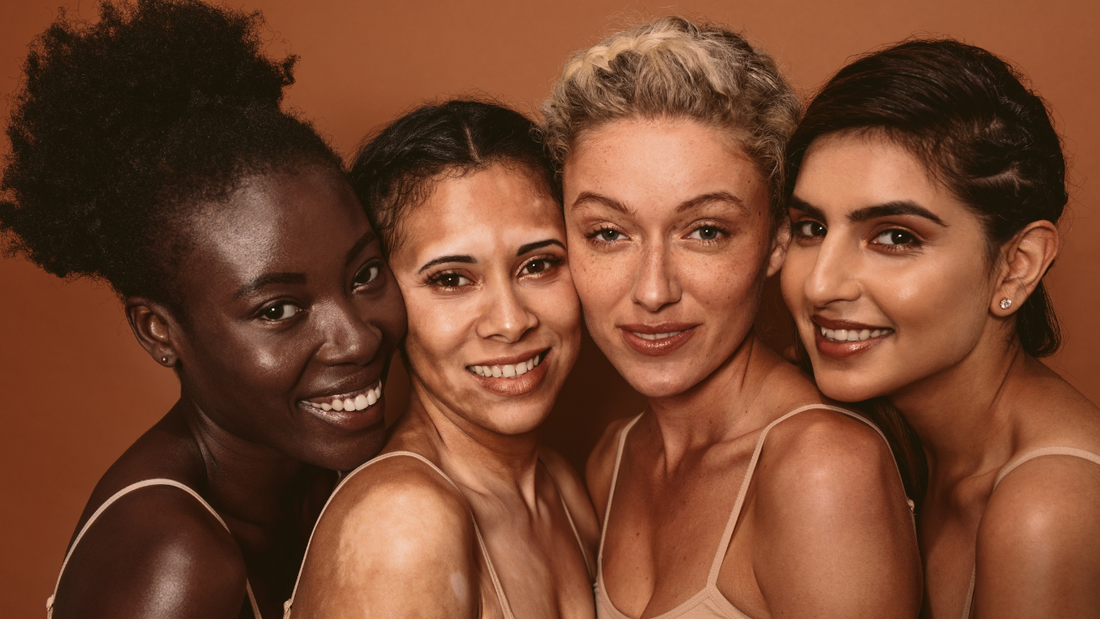
Why Skin Type Matters in PMU: Unlocking the Secrets of the Canvas
Let’s talk skin because as PMU artists, we’re not just laying down pigment. We’re crafting long-lasting, confidence-boosting art on the most personal canvas there is: the skin. And guess what? Not all skin is created equal.
That’s why understanding skin types, textures, and the Fitzpatrick Scale isn’t just helpful it’s non-negotiable if you want consistent, beautiful healed results.

Why PMU Artists Must Study Skin Types
It’s easy to focus on pigment color or needle choice, but what about the skin you’re working on? Oily, dry, thin, resistant, sun-damaged it all plays a role. Every skin type has its quirks, and if you don’t understand the rules of the canvas, you’re setting yourself (and your client) up for poor retention, uneven healing, or even full-on pigment migration.
Understanding skin type helps you:
🩷 Choose the right technique (think: pixel shading vs. hair strokes)
🩷 Adjust needle depth and hand pressure
🩷 Anticipate fading patterns and touch-up needs
🩷 Pick pigments that heal true to tone
What Is the Fitzpatrick Skin Tone Scale?
The Fitzpatrick Scale is a skin classification system that helps artists identify how different skin tones react to sun exposure, pigment, and trauma. It ranges from Fitz 1 (very fair, burns easily) to Fitz 6 (deeply pigmented, rarely burns).
Now, is it a perfect system? No. But it is a powerful tool to help guide your pigment choices and expectations.
💡 Pro Tip: Use the Fitzpatrick Scale as a suggestion, not a strict rule. Your experience, visual assessment, and healed results are always the final say.

Pigment Selection Starts with Skin Tone
Pigment isn’t one-size-fits-all. A soft neutral on Fitz 1 may barely show up on a Fitz 5. And a rich warm brown on Fitz 5 might pull way too red on a Fitz 2.
Understanding undertones and overtone behavior is essential for selecting pigments that:
🩷 Implant easily
🩷 Heal beautifully
🩷 Age gracefully
This is especially true for clients with sun-damaged skin, ruddy tones, or post-inflammatory hyperpigmentation. (If you’re seeing a trend here it’s SKIN. Always skin.)
🧠 Want to dive deeper? Check out our Beyond the Epidermis: Ultimate Color Theory Guide for in-depth pigment science.

Technique Isn’t Universal—It’s Skin-Dependent
You can’t apply the same method to every face. For example:
🩷 Hair strokes on oily skin? Expect them to blur fast.
🩷 Dry, thin skin? You’ll need a light hand and tighter needle control.
🩷 Sensitive or mature skin? Expect slower passes and modified pressure.
Master artists don’t have “one technique.” They adjust based on the skin in front of them. This adaptability is what separates advanced artists from the rest.
Fading, Retention & Touch-Ups
Here’s the truth: pigment retention is never guaranteed. But skin type can tell you a lot about what to expect.
Some clients may fade faster due to:
🩷 Overactive oil glands
🩷 Over exfoliation or skincare habits
🩷 Thin or damaged skin barriers
🩷 Fitz levels that metabolize pigment differently
By recognizing these variables before you start, you can properly educate your client, adjust your expectations, and plan realistic follow-ups.
Use the Right Tools: Beyond the Epidermis Reference Guide
Struggle with assessing skin type? You’re not alone. That’s why we created the Beyond the Epidermis Interactive Reference Guide & Checklists—designed to give you:
✅ Visual examples of real skin types
✅ Printable Fitzpatrick comparison charts
✅ Technique and pigment tips by skin type
✅ Artist-friendly checklists you can use at the appointment
💥 Order it now so you’re never left guessing again.
Final Thoughts: Every Canvas Deserves Perfection
At the end of the day, our job isn’t just to implant pigment. It’s to enhance beauty without compromising skin integrity or healed results. Understanding the canvas beneath the color is how we get there. Know your Fitz. Know your skin types. And never stop learning.
✨ Related Girlz Ink Resources
🩷 Aqua & Velvet Brow Pigment Collections

FAQ: Skin Types & PMU
Q: Is the Fitzpatrick scale always accurate?
A: Not always—it’s a great starting point, but artists should also factor in skin condition, damage, and real-time observations.
Q: What skin types are considered “challenging” for PMU?
A: Oily, mature, sun-damaged, ruddy skin, or those with strong pink or violet undertones can all pose unique challenges.
Q: How can I get better at skin analysis?
A: Practice, training, and using visual tools like the Beyond the Epidermis reference guide can help sharpen your eye.